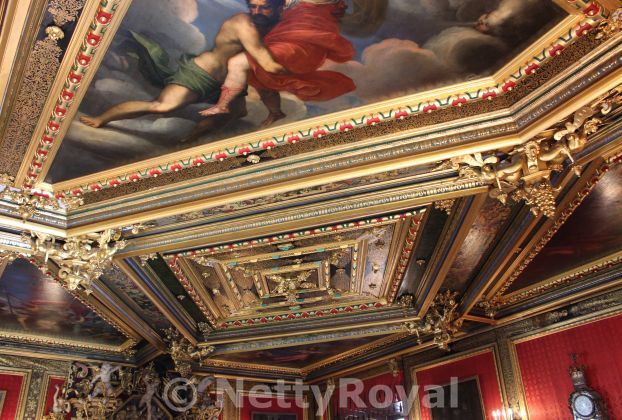On Saturday September 12, 2020 Fürst Alexander zu Schaumburg-Lippe married Mahkameh Navabi civilly at Bückeburg Palace, Bückeburg, Germany. Due to Covid-19 they have postponed their religious wedding and huge celebrations to 2021, so the wedding celebrations this year have been altered. Two days of party as far as I understood with no more than 50 guests, which was only about 15 % of the guests they had planned to invite. The wedding was also a private one inside the palace, instead of in the nearby town hall, so no onlookers. The bride, who has Iranian roots, was christened in Bückeburg earlier this year as Mahkameh Eva-Benita Vanessa Navabi.
Among the guests were the first wife of the Fürst Princess Lilly zu Sayn-Wittgenstein-Berleburg and her daughter Lana Milona, their son Hereditary Prince Heinrich Donatus zu Schaumburg-Lippe, Princess Vanessa zu Sayn-Wittgenstein-Berleburg and her husband Pieter Haitsma Mulier, Prince Maximilian and Princess Sophie zu Ysenburg und Büdingen and Rolf Sachs. On the guestlist were furthermore Hereditary Prince Ernst August and Hereditary Princess Ekaterina of Hannover, the Fürst and Fürstin zu Löwenstein-Wertheim-Freudenberg, counts Faber-Castell, a prince and Landgrave of Hessen as well as Count zu Schulenburg, and of course relatives of the bride. See for photos here.
Princess Lilly zu Sayn-Wittgenstein-Berleburg was a witness for the bride, while Prince Maximilian zu Ysenburg und Büdingen was one of the other witnesses.
The Golden Hall
One of the most impressive rooms in the palace was used for the civil marriage: the Golden Hall, that contains masterpieces of the art of woodcarving. The decoration dates back to the early 17th century when Fürst Ernst zu Schaumburg-Lippe ruled the principality. He gave the Wolff brothers the order for the woodcarving. The highlight is the Gate of Gods with figures, lavishly carved in a mannerist style. The carvings are full of symbolism and allusion. Originally the Golden Hall was used as a theater for the court. Only in 1862 the red silk on the walls was added.



